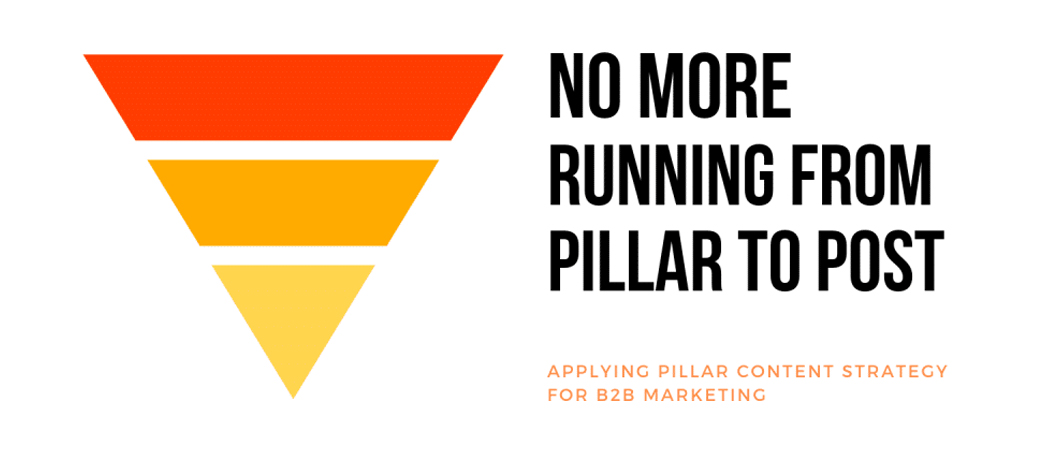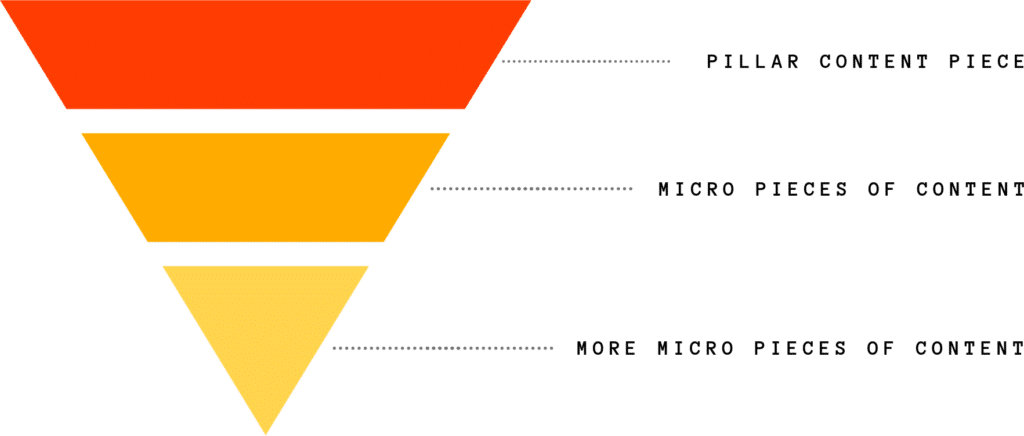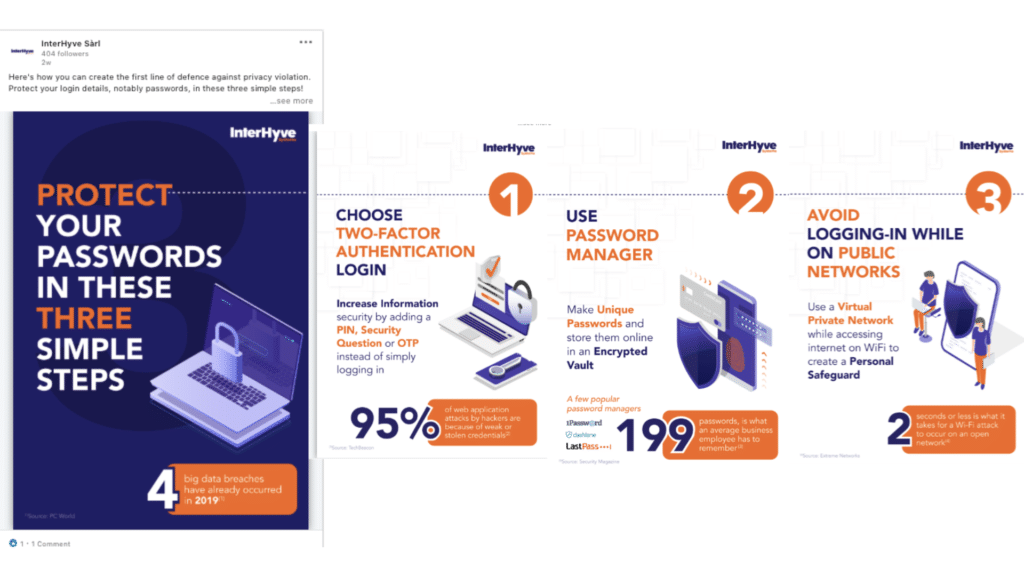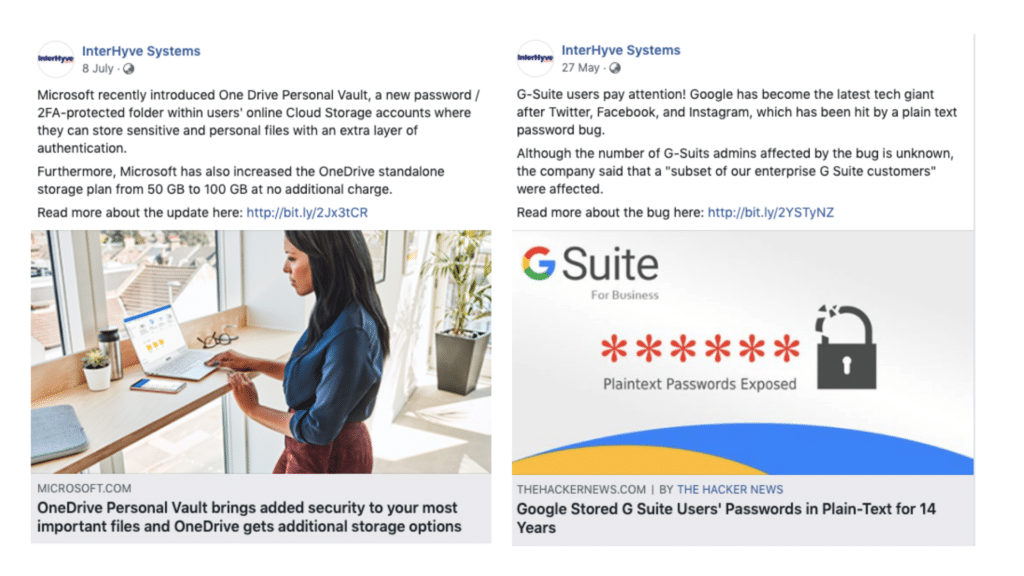No More Running from Pillar to Post

The Pillar-Content strategy has been around for some time, and more recently, Gary V has made it popular by successfully tapping it to grow his influence.
With this approach, we are no more running campaigns from pillar to post (bear with me, it should become clear as you scroll down). We are applying this with our B2B clients, and we want to share what we have learned.
What is Content Pillar Strategy?
Pillar content is typically a piece of content that goes deep into a specific topic that your audience really cares for. This is generally produced in the form of a vlog (video blog), podcast, e-book, how-to guide, or a long-form blog.
Once you have created Pillar content, you can extract multiple pieces of micro content from it. Micro pieces can be in the form of social media posts or Stories, shorter video clips or blogs.

Why is this a Good Strategy?
The Content Pillar strategy has several benefits.
Scale your content
The Pillar Content production is generally a lot of effort. However, once all that upfront research is done and the content is developed, you can produce a ton of micro-content easily and efficiently.
Reach a wider audience effectively
When you create micro-content, you can optimize it for various platforms. So, for the same piece of content, if you were to create a video on LinkedIn, a post on Facebook, and a Story on Instagram, you will reach a wider audience and likely, will receive more engagement.
Create Surround Sound
When you repeat the same content in various formats across multiple platforms, you create the Surround Sound effect, and you can really drive home your messaging this way (we call this “sticky” messaging).
Putting the Pillar Strategy to Action
We have been applying this approach for a few years now without even realizing it. More recently though, with one of our B2B clients, Interhyve, we have deliberately and systematically tapped this strategy.
Step by Step – How we applied the Pillar Content framework
1. Identify a Pillar Topic
We picked the topic of “Password Protection” as it is relevant to our client’s space, and is a hot-button topic.
2. Research
We researched this in detail and created a skeleton structure on how this topic could be organized –what, why, how, and what next.
3. Choose Pillar Content format
We chose to go with a Video format — because LinkedIn is our primary platform and videos are trending here. Plus, we felt solid about our video-production ability even with limited creative assets.
4.Gauge performance
We saw better engagement on this video versus prior content. With this validation, we moved to micro-content production.
5. Create Micro Content
Next, one after the other, we created Micro pieces. Each one was tailored to the audience and the platform we were targeting. E.g., via Stories on Instagram, we gave a more informal feel to this serious content — as the Instagram audience expects more “fun” versus plain information. On LinkedIn, Carousel content (in PDF) format is trending, so we tapped that. And, on Facebook, we even tapped curated content — as those are effective with the audience there.
Adapted the Pillar Content into bite-sized Stories on Instagram
Tapped the trending Carousel format on LinkedIn

Shared news and informative content on Facebook from other sources

No More Running Pillar to Post
For us, this approach has changed how we figure out campaign ideas. Instead of just scratching the surface on too many content topics, now we focus on fewer but bigger topics, and share informational content in larger and smaller pieces.
Yes, there is a lot of upfront effort when we create the Pillar Content. But, when we do a thorough job up front, the micro pieces require less effort.
More importantly, as we play out these multiple pieces of content across various channels and audiences, our marketing is becoming more effective — more shares, more engagement, and more website traffic.
Now, that is the type of strategy which can be a Pillar of strength for every marketer!
What do you think of this Content Strategy? Share your feedback in the Comments, and if you have questions, let us know.

How does your Presentation measure up?
Do you have a major event or a high-stakes meeting coming up? Do you need a sharp narrative and bold design?
Let's connect and we can take a closer look at your presentations. We'll share with you actionable ideas along with real examples that you can apply to improve odds of success.